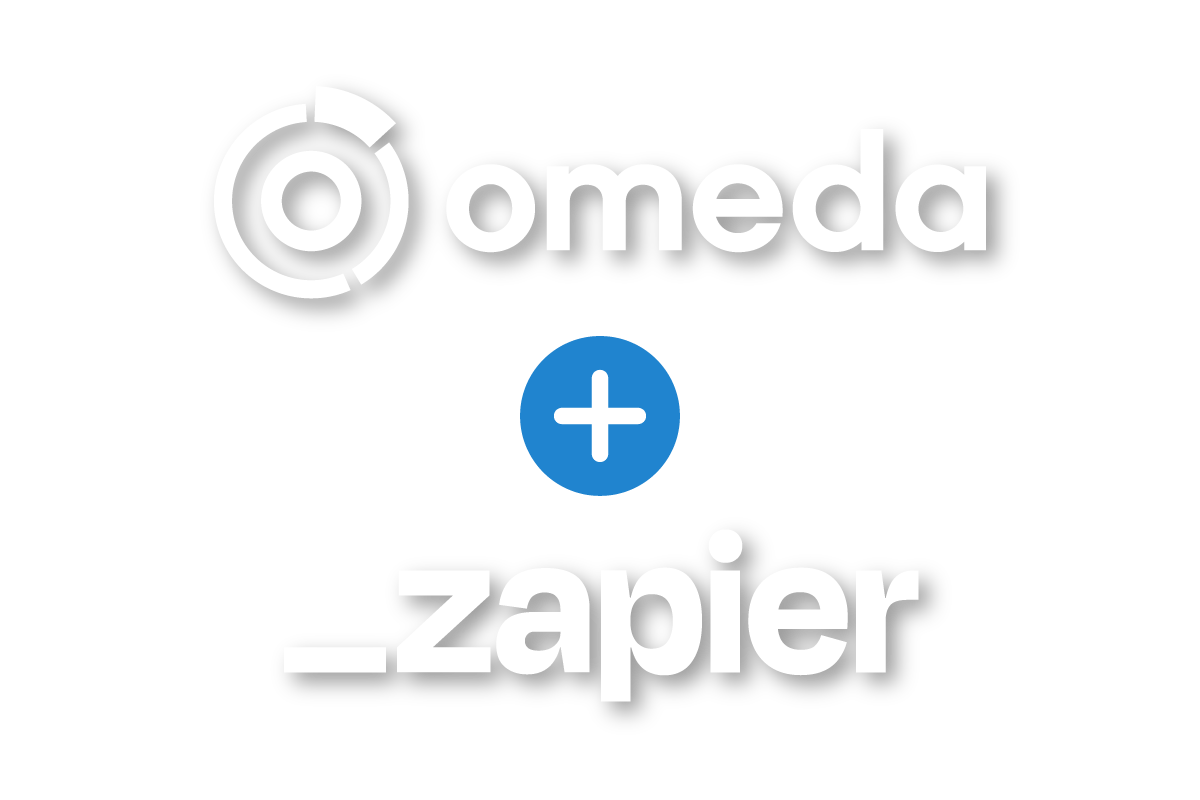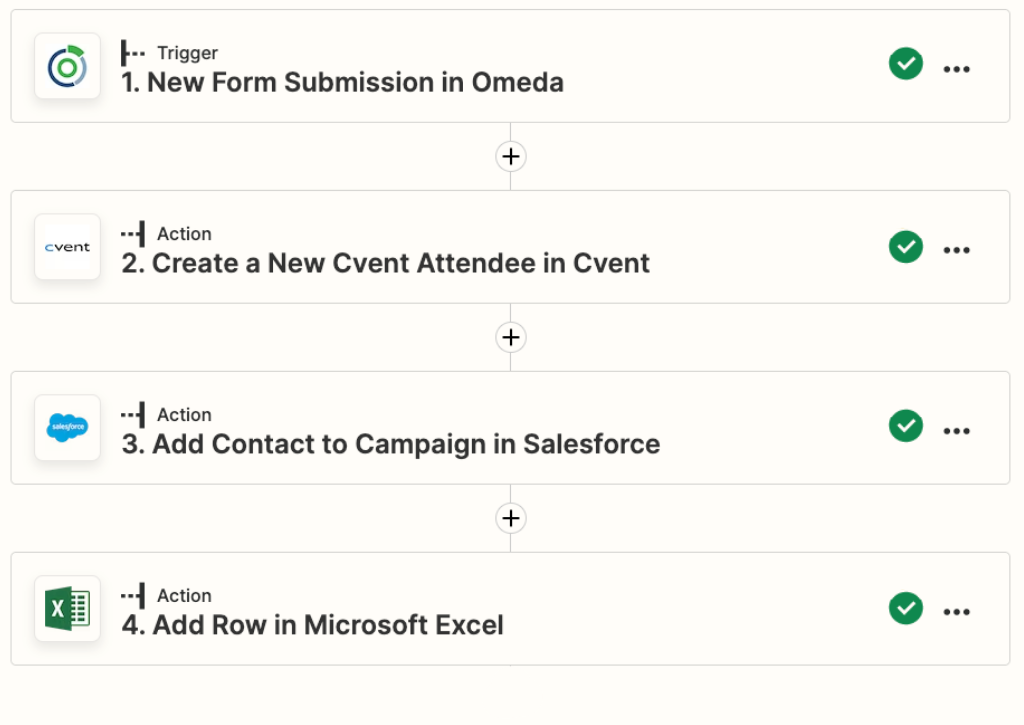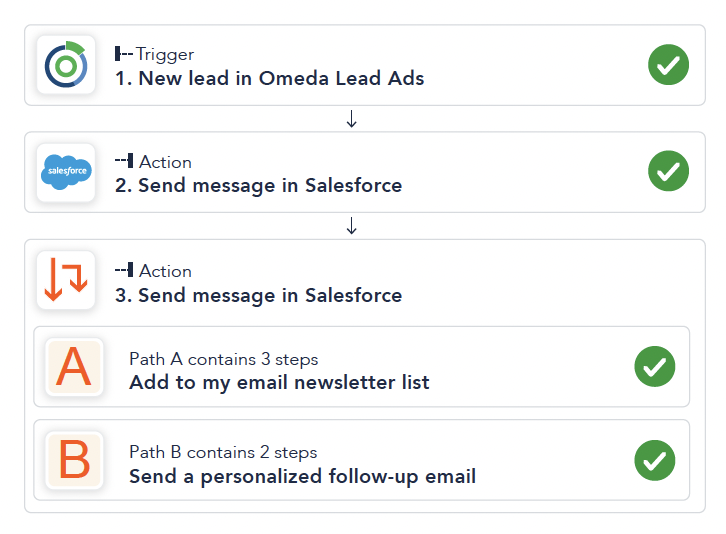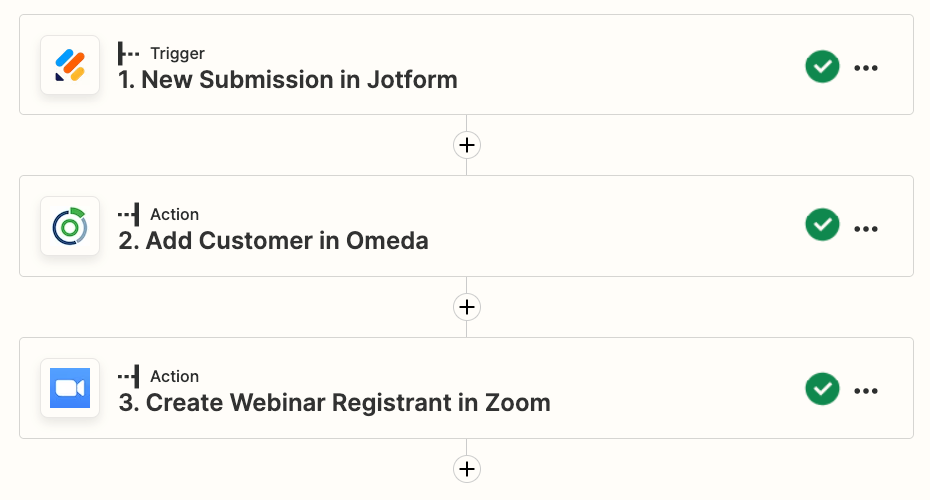Do more with your data with Omeda's Zapier integration
Omeda is excited to partner with Zapier, a leading no-code process automation platform that connects data between web apps that are not linked via direct integrations. Zapier lets you send your Omeda data to and from thousands of the most popular apps, so you can automate your work and have more time for what matters most — no code or CSS necessary.

What is Zapier?
Zapier can be used to connect Omeda with 5,000+ other apps, including Salesforce, Eventbrite, Gravity Forms, the Google suite, Jotform, GoToWebinar, Cvent, the Microsoft suite, etc.
Omeda clients can use Zapier to create, automate and streamline workflows between Omeda and their preferred systems, even if Omeda does not directly integrate with them — and save hours of manual work in the process.

Why use Omeda's Zapier integration
- Two-way sync: In most cases, integrations set up through Zapier are bidirectional, meaning that data can be sent to and from Omeda and any of the available partner apps.
- Code-free setup: Integrations can be set up quickly without separate code or developer assistance, then run on autopilot.
- Custom output files and data mapping: In Zapier’s integration builder, customize your output files and map data fields between Omeda and your chosen apps, so data is always stored in the right place and in the right format for your needs.
- Seamless automation: Trigger workflows from either platform to the other, so activities that take place throughout the customer journey can be automated and replicated over and over.

How Zapier transfers data between Omeda and partner apps
Zapier functions as a bridge between two different apps, the trigger app and the action app. When an action is taken in the trigger app, it flows through Zapier, then causes one or more predetermined actions to be taken in another app (“action apps”).
Typically, the trigger involves the addition of customer data to one app (i.e., someone registers for an event, downloads an eBook, completes a demo request form) and the action involves the storage and/or activation of that customer data in the second app (creating a new contact, add a new contact to a campaign, update the contact’s customer profile, etc.).

What you can do with the Zapier integration
Zapier can be used to connect Omeda with 5,000+ other apps, including Salesforce, the Google suite, Calendly, GoTo Webinar, Trello, etc. Use cases include:
- When someone completes a form on Omeda, their information and form responses are automatically added to Salesforce as a new contact record.
- When someone completes a form on Omeda, their information and form responses are automatically added to an ongoing campaign in Salesforce.
- When someone schedules a demo on Calendly, their information is automatically added to Omeda’s Audience Builder as a new contact.
How to set up your Zapier integration on Omeda
Getting started is simple. To set up a Zap, clients will need both an Omeda account and a Zapier account. Clients will also need the following information to authenticate their Omeda account in Zapier (submit a ticket to Omeda Support for this information).
- Omeda Client Brand Abbreviation
- Omeda Input ID
- API key. That’s all!
Already have a Zapier account? Zapier account holders can simply log into Zapier and navigate to the Integration Builder. Select Omeda’s new Form Submission Trigger or Omeda’s Add Customer Action. Then map data between fields, customize the output file, then run a test of the integration before setting it live. (If you do not currently have an account, check out Zapier’s pricing model to get started.)


